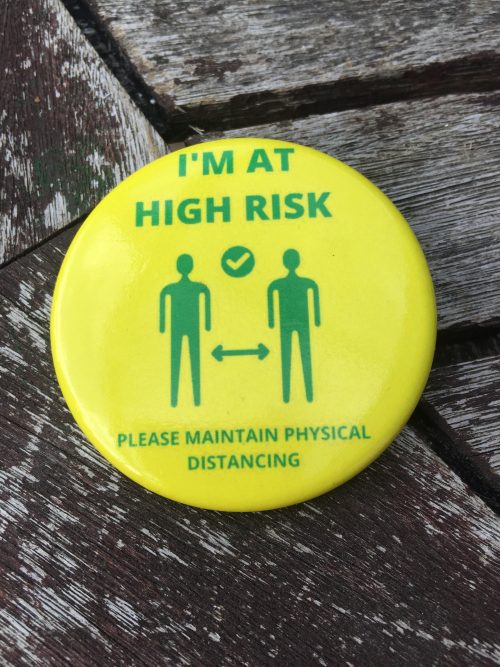“There are decades where nothing happens and there are weeks where decades happen." George Galloway (commonly mis-attributed to Vladimir Ilyich Lenin)
Since the COVID-19 pandemic hit Britain in March 2020, I’ve spent a year on secondment at the Department of Health and Social Care (DHSC) working on the COVID-19 response. Below are some of my reflections on the change in lifestyle and experiences I gained.
An emerging crisis
If you’d asked me what coronavirus was last January, I would have said it was on the other side of the world, a problem for faraway lands that happens every few years and nothing to worry about.
Slowly, it started getting closer. Cases first appeared in Europe, and then in the UK by late January. In March, signs started appearing at work providing practical steps and advice on helping to prevent the spread of germs and encouraging working from home if possible.
Finally, the news came, on 23 March 2020 the Prime Minister gave us all a very simple instruction – we must stay at home.
A call for analysts across government
The Civil Service wasn’t standing idly by. The Government Analysis Function recognised that experienced analysts were needed to be re-deployed across government. We were needed to meet the emerging need of assessing the impact of COVID-19 on all aspects of life (or to back-fill for analysts moved into such roles) and respond to it.
I volunteered and was subsequently matched-up with an opening in the Health Care Analysis Team at DHSC. They’d expressed a desire for experienced analysts who could work in a consulting arrangement with policy officials.
So here I was, an investment actuary advising on health care policy and analysis in the middle of the biggest worldwide pandemic in about 100 years…
A stranger in a strange land
I joined a team at DHSC with responsibility for covering the Clinically Extremely Vulnerable (CEV) policy area. The CEV are individuals who have heightened risk of adverse health outcomes from COVID-19 due to the presence of underlying pre-existing medical conditions.
At the onset of the pandemic, the CEV were advised to shield in order to reduce infection rates in that group (which would have knock-on consequences on mortality and hospitalisations). These individuals were identified based on a set of clinical conditions and added to the Shielded Patient List which the government used to provide targeted advice and support.

At the same time, England’s Chief Medical Officer (CMO) recognised that we could develop a more refined approach to identifying the CEV once data became available. This was based on a combination of risk factors (such as age, gender and ethnicity) rather than solely on pre-existing conditions.
You might ask, what can an actuary who spends all day working on financial models do to help? In fact, a lot! Most modelling and analysis broadly require the same set of skills, regardless of application. That is:
- understanding of data, assumptions, calculations and results; and each of their limitations
- knowledge of the principles of good governance and quality assurance
- appreciation of how complex systems inter-connect
- the ability to communicate this concisely and effectively to stakeholders of wildly different technical backgrounds
Communication is key. By bringing openness and clarity to what is a very academic approach, you help senior stakeholders make informed decisions in a fast-paced and dynamic environment.
It wasn’t all plain sailing. There was a steep learning curve in picking up the relevant domain knowledge (I’ll learn to pronounce ‘ankylosing spondylitis’ someday!). I’ve also learned how to understand the wider challenges and pressures of working in a ministerial department and engaging with arms-length bodies and other stakeholders on a daily basis.
The role was not what a traditional consultant might be used to where there is a pre-defined problem to solve. Given the changing face of the pandemic, flexibility and pro-activity was especially required as policy objectives changed (for example, with the approval of vaccines).
A new way of working
At the same time, I started to work from home. While remote working has been around for decades, this is probably the first time I have had to do it on a regular basis.
We experienced a phenomenon called ‘meeting creep’. This is where meetings tended to start earlier in the day and finish later (replacing the usual commute).
This was outweighed by the positives of increased collaborative working, a concerted effort to maintain connections with each other … and never having to find a meeting room.

A significant public health achievement
After many months of hard work, early mornings and late nights, our cross-government team delivered the COVID-19 Population Risk Assessment.
Using a predictive risk model commissioned by the CMO and developed by Oxford University, we identified more than 1.5 million adults with multiple risk factors that put them at high-risk from COVID-19. They’ll be added to the Shielded Patient List and prioritised for vaccination if they have not already had the jab.

This world-leading approach has been developed at unprecedent pace over some months, while simultaneously aiming to meet the highest standards of evidence, clinical safety and technical assurance.
It’s truly a testament to the pace of change we can achieve in a short amount of time when our backs are against the wall.
